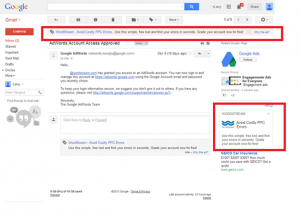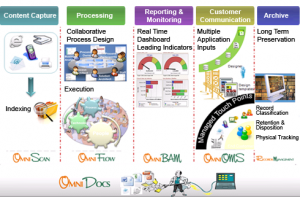
No matter where employees are working — whether remotely or in various office locations — your organization must find ways to keep them engaged and contributing.
One of the best ways to do so is with an employee advocacy platform. These are platforms that act as the organized central hub for your company and employees.
Why Employee Advocacy?
Keeping your organization’s employees connected, informed, creating, and sharing can be a difficult task. This is especially true with companies that have multiple or global locations and those that are adopting more remote work environments.
But this is where employee advocacy platforms play a major role in easily organizing content, enabling employees to stay informed, and to encourage them to share content and news to their own social networks.
Organizations of all industries and sizes are finding unique value in getting their employees more involved. And the impact can be felt in marketing, sales, recruiting, employer branding, and employee communications.
Plus, there is tons of data to back up the value:
- 98% of employees use at least one social media site for personal use, of which 50% are already posting about their company. (Weber Shandwick)
- 87.2% surveyed recognized employee advocacy contributed to expanding their professional network and 76% believed that it helped them keep up with industry trends. (Hinge Marketing)
- Content shared by employees receives 8x more engagement than content shared by brand channels. (Social Media Today)
- According to IBM, when a lead is generated through social selling or employee advocacy that lead is 7X more likely to close compared to other lead gen tactics. (Gartner)
- Use of social software by employees can improve productivity by 20-25%. (McKinsey)
- Job seekers rank social media and professional networks as the most useful job search resource compared to job boards, job ads, recruiting agencies, and recruiting events. (CareerArc)
And, employee advocacy also benefits employees by helping them establish thought leadership and grow their own personal brands. A win-win!
Employee Advocacy Platforms to Consider
Many organizations have tried to do these things via a company newsletter or their own basic internal tool, but tend to find that there are many challenges with those. This is where employee advocacy platforms become critical and more useful.
However, as the market and needs of companies have grown, this has created a more expansive market of employee advocacy software options to choose from.
The list of vendors
For this list of employee advocacy platforms, I chose to only include those that are entirely stand alone — those that primarily live and breath employee advocacy. There are no secondary products by other companies in this list.
For example, Sprout Social and Hootsuite have their own employee advocacy products. While they may work for your company advocacy needs, they are what I’d consider “side products” to what their company ultimately does — social media management.
Certainly, those can still work for your company needs, but for this list I wanted to focus on the employee advocacy platforms that were built for exactly social media at work and it is their main focus.
LinkedIn also had their own called Elevate, which was fairly popular and you have heard of or even used. However, they recently announced they were shutting it down at the end of 2020 and are merging some aspects to company pages.
Below in no particular order are the current employee advocacy tools that exist and a short overview. Which vendor you choose will depend on your program goals and needs, product features and integrations, on-going support, budget and more.
Smarp
One employee advocacy and communications platform headquartered in Finland is the company Smarp.
While Smarp has the capabilities of most employee advocacy platforms, they have shifted their focus over the years to be more valuable to internal communications. This is great news if you are strictly looking to boost employee communications and keep employees connected via mobile.
This doesn’t mean they have abandoned the essentials of employee advocacy, but they are heavily focused on features to improve communications.
Businesses can create, aggregate, and automatically deliver personalized content to every employee, while empowering them to amplify select messages externally. Smarp’s core focus is on improving employee engagement, crisis communications, remote workers, and advocacy.
Some features include real-time news and alerts via mobile apps, customized feeds and content organization, newsletter feature, employee engagement analytics, syncs with intranets, numerous integrations, and more.
EveryoneSocial
One of the originators in the employee advocacy space, EveryoneSocial has been around for close to a decade. Focused on solutions that include employee advocacy, social selling, employer branding, social recruiting, and internal communications.
The product has continued to advance and improve over the years, but one thing has stayed top of mind — building a product employees want to use.
With a heavy focus on long-term success, on-going support, and strategy, EveryoneSocial is trusted by some of the largest and most recognized companies in the world. Some of their customers include: Dell, Mattress Firm, Harley-Davidson, ADP, Indeed, Adobe, and many more.
The social platform boasts numerous integrations, intuitive mobile apps, was the first to have a built-in Salesforce version for sales teams, internal and external reporting, numerous content settings and segmenting, push notifications, email newsletter, chrome extension, native video, ability to post social links for employees to engage with, and much more.
GaggleAMP
One of the first employee advocacy platforms to exist is GaggleAMP. The employee advocacy platform is also close to a decade old and has been helping small to larger businesses with their employee advocacy needs.
The Massachusetts based company has worked with numerous well-known brands to smaller companies looking to also get started with an employee advocacy strategy and program. Some customers include Michael Page, Ricoh, Thomson Reuters, Experian, and more.
Some notable product features include: segmenting content for your employees, different action items for your employees to boost engagement (like subscribe to a newsletter, follow a Pinterest board, etc.), analytics, gamification, and more.
Dynamic Signal
Another recognizable name you may come across is Dynamic Signal, which position themselves as an employee communications and advocacy platform.
Similar to how Smarp places their focus, Dynamic Signal is big on communications and focused on product features that keep employees informed. Yet, they are also used by marketing and human resource teams.
Some of the platform’s notable features include personalized news feeds, document and multimedia support, push notifications, newsletters, numerous integrations, surveys and polls, commenting and direct messaging, gamification, compliance controls, and more.
Dynamic Signal works with well-known brands like FedEx, Verizon, WaWa, Bosch, Vodafone, Capital One, and more.
PostBeyond
Employee advocacy platform PostBeyond focuses primarily on activating your employee advocates for marketing, social selling, and employer branding.
The Toronto based company started back in 2013 and has worked with various companies around the world. Some of the brands they work or have worked with include Randstad, Scotia Bank, BCD Travel, VTS, and others.
Some notable features to consider include seamless content curation and distribution, easily connecting your marketing technology to measure website traffic, earned media value, lead conversions, promote healthy competition with leaderboards to help motivate employees and recognize top performers, and other various integrations.
Sociabble
The Paris based employee advocacy platform Sociabble has been on the market for a few years. Their software and solutions are focused on a combo of elements like employee advocacy, internal communications, and social selling.
Sociabble is currently used in over 80 countries and has additional office locations in London and New York City. Some of their customers include BNP Paribas, Deloitte, Microsoft, Renault, and The Walt Disney Company.
You’ll find various features with Sociabble including: the options to organize brand, third-party, and user-generated content into theme channels, gamification options with leaderboards, polls, and quizzes, automatic and custom newsletters, mobile apps for Android, iOS, and Windows Phone, detailed analytics, and much more.
DSMN8
Since the concept of employee advocacy and employee software market continues to grow, there are some newbie platforms popping up as well. One that is relatively new to the space is DSMN8 (pronounced “Disseminate”), founded in 2016.
The software company is currently based in England and focuses heavily on employee advocacy, social selling, and driving impact from employee influencers.
DSMN8 currently works with brands like NETGEAR, Huawei, Cox Automotive, Krauthammer, and more. And their platform is currently used in over 44 countries around the world and is continuing to expand.
Product features include white label branding options, built in leaderboard and gamification options, single-sign on integrations, advanced reporting and analytics, simple content segmentations, and more.
Final Thoughts
Remember, most employee advocacy tools will have overlapping features. But, each will also have some unique product options, preferred UX/UI elements, and customer support dynamics that you’ll want to consider.
And pending the goals of your strategy and program, your needs and budget can greatly vary.
Take your time to explore some of the options, read reviews, talk to colleagues who may use these platforms, and schedule time to see a demo and ask questions. You’ll quickly figure out which platform will be the best fit for your organization.
Business & Finance Articles on Business 2 Community
(96)








